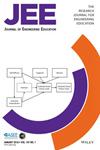Self-explanation activities in statics: A knowledge-building activity to promote conceptual change
Abstract
Background
The complexity and diversity of problems and concepts in different engineering subjects represent a great challenge for students. Traditional approaches to teaching statics are ineffective in helping some students overcome the learning barriers that underlie learning statics and developing problem-solving skills.
Purpose
This article explores how self-explanation activities may support student learning in statics. Specifically, this study examines the characteristics of student self-explanations of worked examples and their relationship with students′ conceptual change.
Design/Method
The study population included 147 undergraduate engineering students enrolled in a statics course. The students wrote their self-explanations at each step of an incomplete or incorrect worked example in the context of static equilibrium. Students′ self-explanations were qualitatively analyzed using content analysis to identify the approaches used. We used descriptive and inferential statistics to identify differences in students′ conceptual understanding of statics, based on their approach to self-explanation.
Results
We identified four self-explaining approaches: restricted explanations, elemental explanations, inferential explanations, and strategic explanations. After completing the activity, students who self-explained incomplete worked examples showed better results in the quality of their explanations and conceptual change than students in the incorrect worked example condition.
Conclusions
The findings suggest a relationship between the type of worked example, students' approaches to self-explaining, and their conceptual change and problem-solving skills in statics. To increase the quality of the students' explanations and to improve their conceptual understanding, additional prompts or initial training in self-explaining may be required within the worked-examples context.

 求助内容:
求助内容: 应助结果提醒方式:
应助结果提醒方式:


